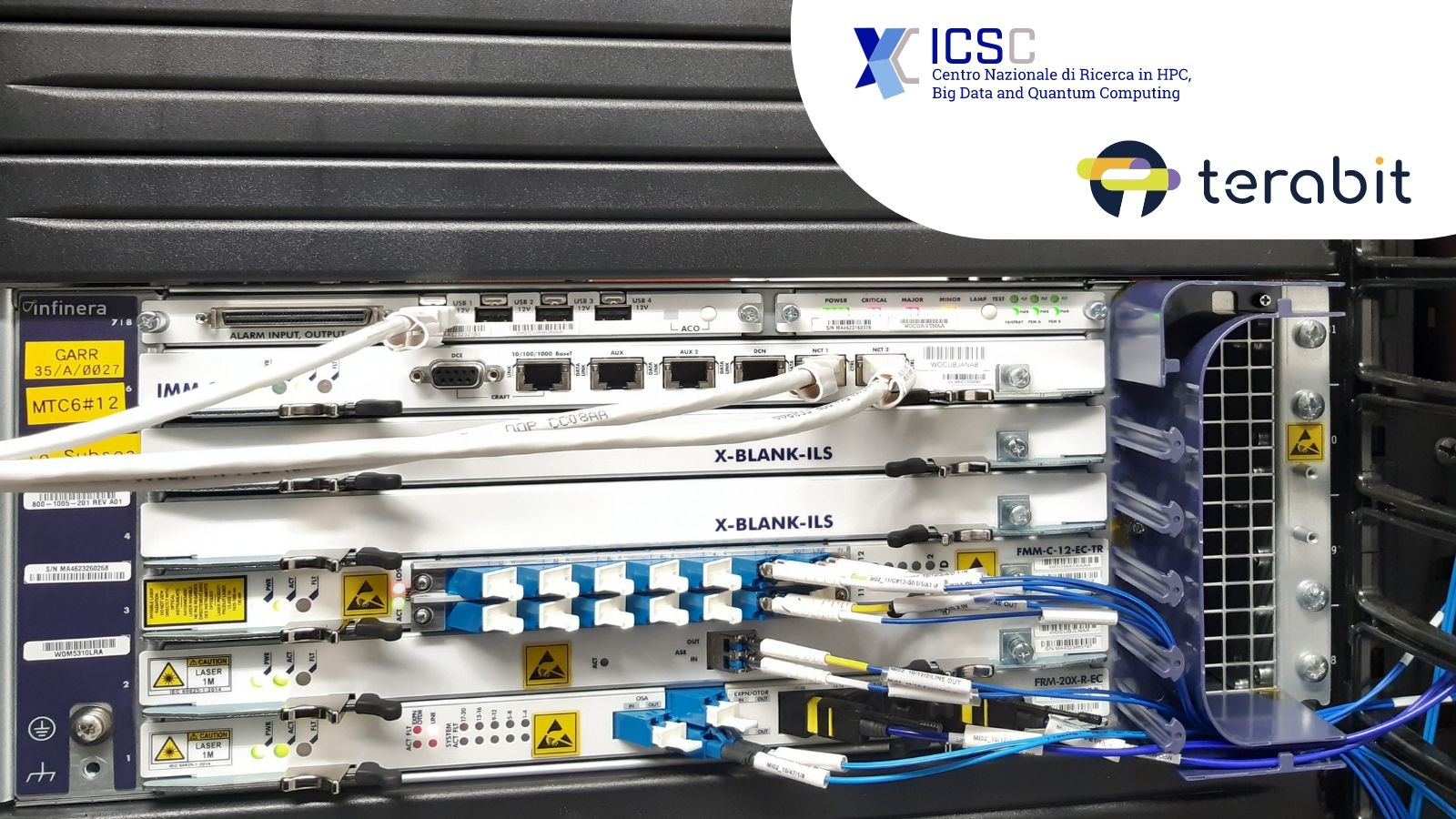GARR-T Network
GARR-T, as in Terabit, is the new generation of GARR network. It is an evolution of the production network, including innovative features.
GARR-T is a cutting-edge network built around the users’ needs and designed to be future-proof. Key main benefits are the ability to adapt over time, rapidly scale-up and grow in terms of capacity, capillarity and provided services.
A new level of automation, enhanced reliability and measurability through advanced monitoring systems are GARR-T’s key innovations.
GARR-T in figures
The numbers of the new network are substantial: 700 km of new fibre optic sections are planned, 42 optical PoPs over approximately 6,000 km of optical fibre and 9 new metropolitan PoPs. 6 more cities will have a double PoP, to ensure redundancy and increase reliability.
The full infrastructure will be 10 times more powerful: the backbone capacity will grow from current 3.5 Tbps to 40 Tbps, while the aggregated access capacity will increase from 2 to 10 Tbps
The technologies
The new network is built with 2 key components: the packet layer and the optical layer.
EVOLUTION FROM THE CURRENT GARR-X NETWORK TO THE NEW GENERATION GARR-T NETWORK
The packet network will undergo a complete renovation, with the replacement of all network equipment now in operation over the national infrastructure. The new architecture is based on the data centre model, i.e. with Spine and Leaf nodes for access aggregation and Edge nodes for end points at the users premises. While ensuring uniformity and equal access to services, this model facilitates the reach of the network, ensuring optimal agility to smaller nodes and leaving the greater impact in terms of space and energy consumption to core nodes only.
Optical network: flexible, efficient and sustainable
The optical network features important innovations fostering flexibility, adaptability to user needs and the creation of new services. It is based on a partially disaggregated model, where fibres and devices are seen as different components whose combination produces the optical transport hardware infrastructure. This model ensures both efficiency and long-term sustainability, as it separates the fibre and the equipment lifecyles, allowing to operate the network independently from a specific network equipment supplier, thus avoiding a technological lock-in. This innovative model is implemented through an Open Line System (OLS) and the use of optical fibres and of an advanced management and control software system. The result is an active infrastructure that is capable of routing any optical signal. The OLS technology caters for the flexible management of the optical spectrum, enabling spectrum sharing and the development and offer of innovative applications, such as time and frequency transport or Quantum Key Distribution.
New services
The GARR-T network is designed to offer users new services and empower them with the ability to configure and manage them independently, according to their specific needs.
Distributed computing
One of the most distinctive innovative services offered by GARR-T, is Data Centre Interconnection, i.e. the geographical interconnection of data centres as if they were in one location by using direct optical links. By leveraging the partially disaggregated model, the connected sites can directly interface with the Open Line System and create a dedicated optical channel (end-to-end). Thanks to the use of highly specialised and modular equipment, this feature can be offered at relatively low costs, allowing for savings in terms of space and energy consumption.
This model responds to the emerging computing model for large scientific collaborations known as “Data Lake”, in which data access and management takes place locally, while computing resources can be geographically distributed.
Optical paths and spectrum sharing
GARR-T foresees the introduction of optical paths (lightpaths) and spectrum sharing features, seen as the glue for new applications and technical opportunities for users. These services will be a key to seamless interconnection with international infrastructures, for example by making available a portion of the physical infrastructure through spectrum access.
Spectrum sharing is a key enabling factor to extend optical network functionalities wherever economic and geographical constraints are present, as in the case of submarine cables, or more generally of areas with limited or difficult coverage with fibre optics.
Monitoring and automation for a more reliable network
Thanks to the introduction of automation mechanisms, the network management in GARR-T is more efficient in the timely identification of possible malfunctioning and immediate reconfiguration at need.
Automation is fundamental in the new network: processes that used to be require the human intervention are now completely revised . An abstraction model is adopted, that represent the network according to its functions and not the sum of individual components. It is an event-driven model, with the ability to adapt to constant change, similar to the intention-driven model adopted in the ICT and cloud world to automatically evolve services.
Service implementation streamlining, for all needs
A new feature of GARR-T is the streamlining of service implementation. By leveraging a “containerised” approach to virtualisation, processes are broken down into many agile micro-services thus simplifying the service implementation. GARR-T can count on a distributed cloud infrastructure, with mini data centres being implemented in the geographical network nodes. These mini data centres will host both enabling infrastructure services (monitoring, security, AAI, analytics tools) and application services. Among the latter, we plan to offer virtualised network features, such as firewalls or Intrusion Detection Systems, in order to provide support to users who have fewer resources or technical skills.
Map of the GARR-T network with the interventions of the PNRR projects
Map of the GARR-T network with the interventions of the PNRR projects




 Telegram
Telegram








